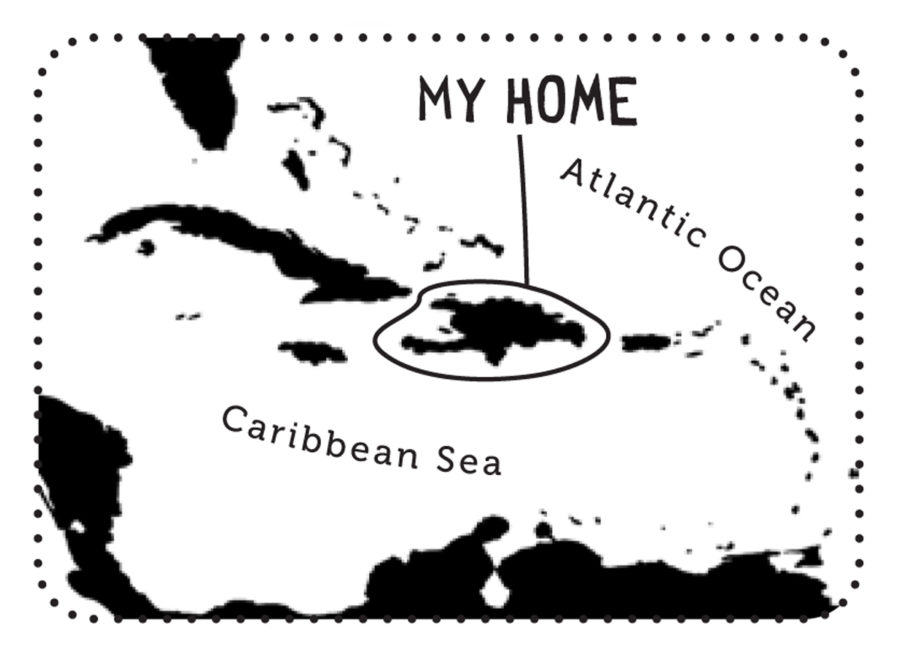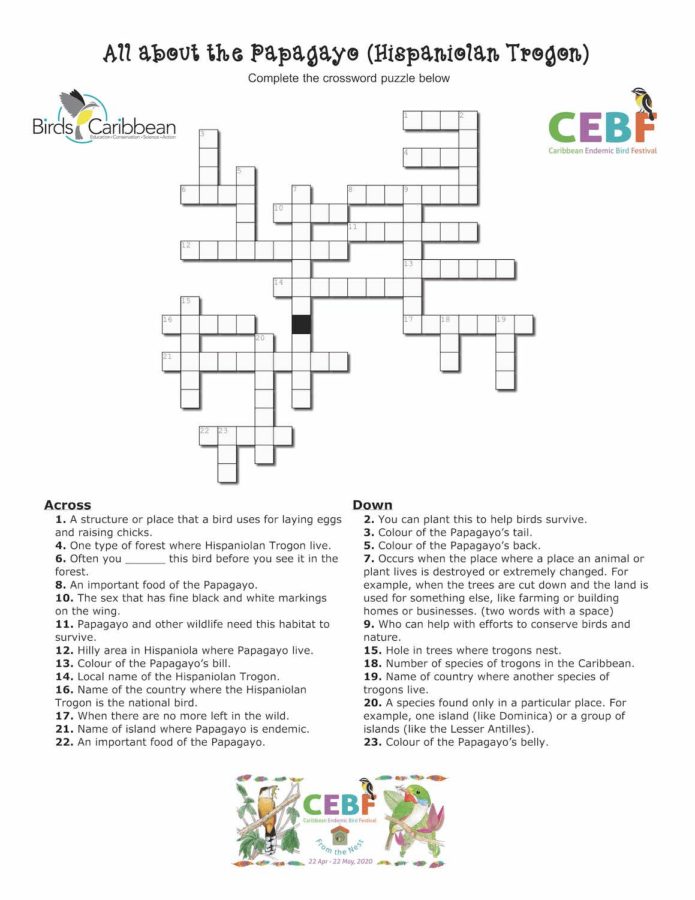Celebrate the Caribbean Endemic Bird Festival (CEBF) with us in our virtual “From the Nest” edition! Have fun learning about a new endemic bird every day. We have colouring pages, puzzles, activities, and more. Download for free and enjoy nature with your family at home.
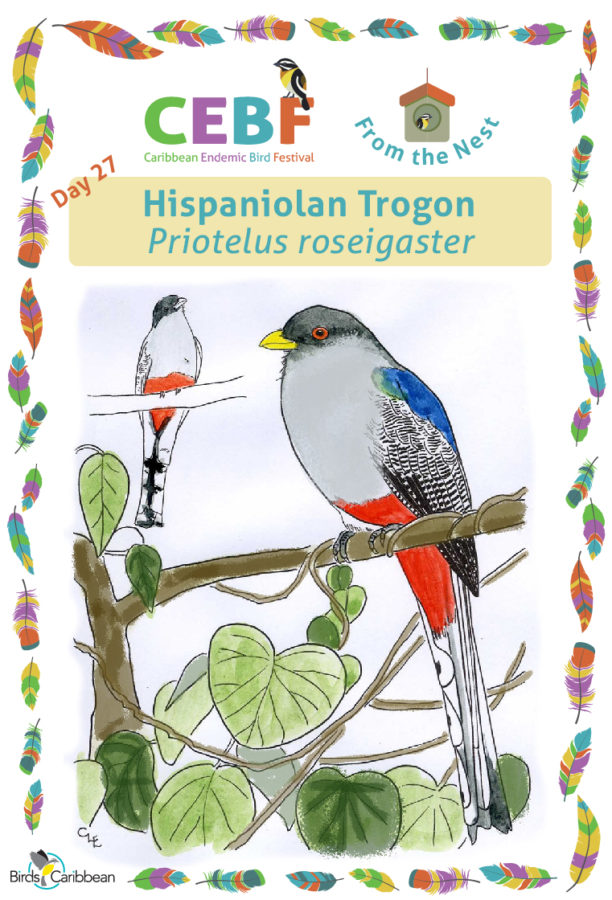
Endemic Bird of the Day: Hispaniolan Trogon
Meet the Hispaniolan Trogon (called Papagayo in the Dominican Republic and Caleçon Rouge in Haiti), one of only two trogon species found within the Caribbean (the other being the sister species, the Cuban Trogon). These birds are hefty and distinct, with a glossy green back, gray breast and throat, red belly, and yellow bill. They have a long dark blue tail marked with white below. The sexes look alike except males have fine black and white markings on the wings while females do not.
Although large, these birds can be difficult to find in denser forests. Fortunately their booming vocalizations can often be heard echoing throughout the hills. As the name implies, this chonker of a bird is endemic to the island of Hispaniola. While they are the national bird of Haiti, due to increasing habitat loss, they are more commonly found in the Cordillera Central and Sierra de Bahoruco mountain ranges of the Dominican Republic. They live in pine and broadleaf forest habitats, and have even been recorded as high as 3,000 m in elevation!
Hispaniolan Trogons are secondary cavity nesters, meaning they’ll take over old cavities from birds such as the Hispaniolan Woodpecker, and enlarge them to make their own nest. Currently the biggest threat these birds face is loss of habitat from deforestation, resulting in their current IUCN listing as Near-Threatened. Some scientists and local conservationists have successfully created nest-boxes for these birds in the scientific reserve, Ebano Verde. The diet of Hispaniolan Trogons is not very well known. They have been recorded eating insects, small anoles, and fruits, especially those of the Parrot Tree (Brunellia comocladifolia). Interestingly, in many other Latin American countries, the Spanish word for trogon is simply trogon, and Papagayo, the name of the Hispaniolan Trogon, is often used for macaws. Be sure to be on the lookout for this striking bird in the mountains of Hispaniola! Learn more about this species, including its range, photos, and calls here.
Colour in the Hispaniolan Trogon!
Download the page from Endemic Birds of the West Indies Colouring Book. Use the drawing above or photo below as your guide, or you can look up pictures of the bird online or in a bird field guide if you have one. Share your coloured-in page with us by posting it online and tagging us @BirdsCaribbean #CEBFfromthenest
Listen to the song of the Hispaniolan Trogon
The Hispaniolan Trogon’s song is described as “cuh kwao or cuh kwao kwao,” or repeating and carrying over long distances.
The Hispaniolan Trogon has a low rattle or cooing call.
Puzzle of the Day
Click on the image below to do the puzzle. You can make the puzzle as easy or as hard as you like – for example, 6, 8, or 12 pieces for young children, all the way up to 1,024 pieces for those that are up for a challenge!
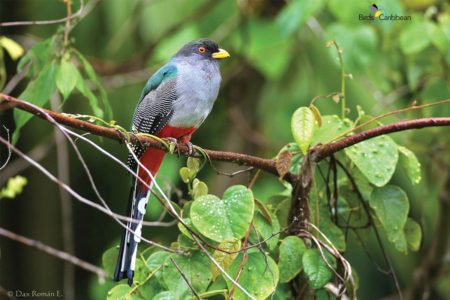
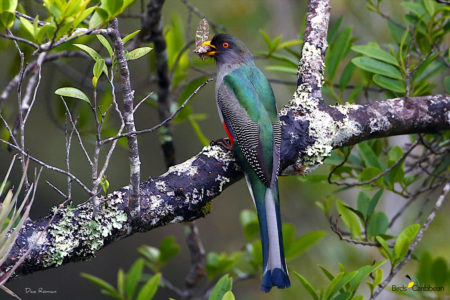
Activity of the Day
FOR KIDS & ADULTS: Complete our All about the Papagayo (Hispaniolan Trogon) Crossword Puzzle! How many words do you know? Be sure to read about the Papagayo, our Endemic Bird of the Day, for clues to the puzzle. If you need help, also check out our Glossary for some definitions that will help you complete this puzzle. And here is a the Answer Key to the puzzle.
And check out this short video with nice footage about the national bird of Haiti, called the Caleçon Rouge in Haiti.

